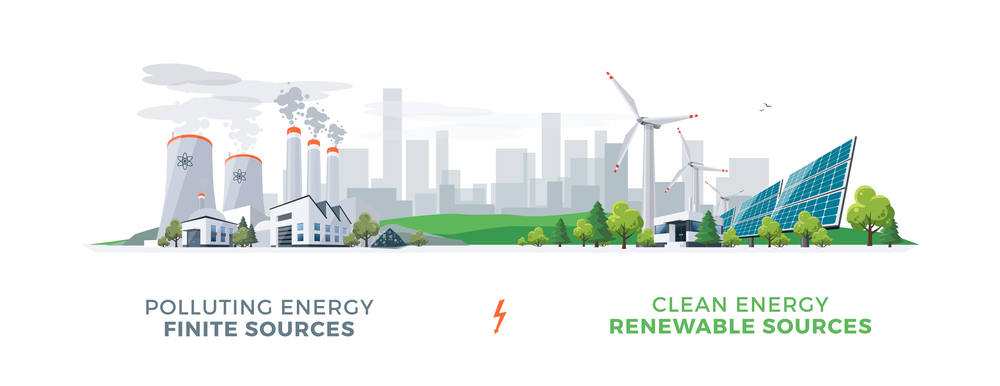
Climate Change refers to long term alterations in temperature and weather patterns. The rise in global temperatures from the 20th century to the present is an alarming consequence of climate change. Climate change may impact weather patterns to an unpredictable level. Variations in solar cycles and human activities such as burning fossil fuels (coal, oil and gas) contribute significantly to climate change. (1)
The generation of greenhouse gas emissions also contributes to the rise in global temperature. These greenhouse gases (carbon dioxide, methane) blanket the planet near the surface. It results in the trapping of the solar heat and raising the temperatures at an alarming point. (1)
The impact of climate change are pervasive. Higher temperatures may lead to aberrant natural events such as hurricanes, floods, winter storms, forest fires, excessive rain. The effect of global warming on polar regions, such as the melting of glaciers and ice sheets, has accelerated to an alarming rate. It leads to rising sea and ocean levels, frequent and heavy floods, and soil erosion on the coastlines. (2)

Disruptions with Engineering to Address Climate Change
Atmospheric carbon-dioxide levels must be reduced to a safer threshold of 350 parts per million and a global temperature rise of not more than 1.5 degrees to address climate change. It means a reduction of 2,000 gigatonnes of CO2 from the atmosphere. A long term solution is the designing of carbon-negative societies. Engineers will have to scale up on existing technologies to disrupt climate change. The way forward will be to work on a changeover to a community powered by carbon-free energy, carbon sequestration mandates in forests, soil, geological formations, and other adaptable locations. Solar Radiation Management, deflecting some of the sunlight to reduce the atmosphere’s heat, will become a priority as we move towards the net zero-emission goals. (3)

The Disruptions
There are several opportunities to disrupt climate change by engineering. However, it will need a supportive climate policy to facilitate the decarbonization endeavours of the engineers. United Nations Climate Change Conference (COP26) deliberated on the ways to reduce carbon emissions by 2050. The methods by which engineers can contribute towards the net-zero goal are:
- Solar PV panels – Engineers had mastered the technology of making Solar PV panels to harness solar energy. They are refined solar power generation by applying metal grids to the solar cell surfaces and adding an anti-reflective coating to passivate the semiconductor surface.
- Role of Hydrogen – Hydrogen can play a critical role in creating a carbon-free energy system. It can be a primary renewable energy source and be used as a feedstock to make synthetic fuels replace fossil fuels. It can also be used to decarbonize industrial processes.
- Hydrogen Fuel for Aviation – Aircraft emissions accounts for 2.5 per cent of global carbon emissions. The disruption strategy would be to switch to planes that run on zero-carbon fuels, such as biofuels. A greater possibility is the use of hydrogen for aviation fuel, which is being avidly researched. Suppose low carbon electricity may be used to power electrolysis. The clean hydrogen produced could be used to manufacture chemicals, materials and synthetic fuels.
- Nuclear Power – Nuclear power presents another potential possibility of a zero-carbon energy source. It would have to be regionally compliant, cost-effective and environmentally friendly. It could be efficiently used to run high energy demand critical infrastructure such as hospitals, data centres, airports, trains, and sewage plants – all facilities requiring energy input around the clock. Google plans to set up 24/7 carbon-free energy data centres by 2030! Nuclear Power can be a source to provide carbon-free electricity and process heat. Newer forms of nuclear power produce fault-tolerant fuels that become less reactive as they heat.
- Design of Reactors using Transmutation Technology – Another disruption could be creating reactors that recycle spent fuel to reduce the waste and needs of the mining. It could destroy long-lived waste components via transmutation technology to solve the problem of radioactive waste and promote nuclear energy as a central solution to climate change.
- Sequestering CO2 Emissions – Engineers can assist in reducing carbon dioxide emissions by capturing and storing them from the power plants and preventing them from entering the atmosphere. Mangrove plantations can also act as a natural carbon sink.
- Altering Radioactive Forcing – It is a transition technology measure that reflects more sunlight to space. It can be done by reducing the formation of aeroplane contrails and making roofs and other surfaces white to reflect the sunlight. It could mitigate the impact of higher temperatures’ impact until atmospheric carbon levels are reduced.
- Adaptation and Mitigation – If mitigation of carbon emissions is essential, so is adaptation. A lot has been said about climate change so far. The mandate is one with a streamlined agenda from the Paris Conference in 2015 to the recently concluded COP 26 in 2021. We must adopt technologies that enable us to live sustainably. We have to act NOW. (4)(3)

Maintaining Excellence in Education
The NAAC-accredited and MAKAUT-affiliated OmDayal Group of Institutions churn out young engineers equipped to face the ever-changing landscape of disruptive technologies such as Computational Engineering. The industry-centric engineering courses offered by us include:
- Civil Engineering
- Electrical Engineering
- Mechanical Engineering
- Computer Science and Engineering
The niche training and skills required for these engineering jobs in India and abroad have inspired us to continuously upgrade the teaching and learning curriculum with global standards. We empower our students with a competitive edge and required aptitudes to excel in the new-age technology spectrum. Our facilities include flexible timings and partnerships with National Small Industries Corporation (NSIC) to provide on-job training and relevant placement opportunities.
For more information, visit: https://omdayal.com.
References:




